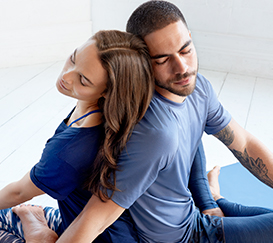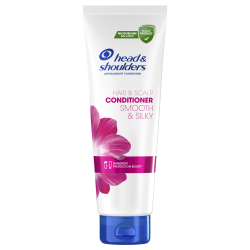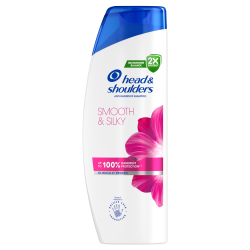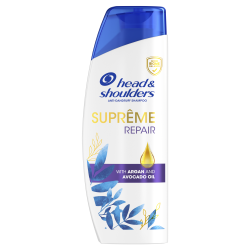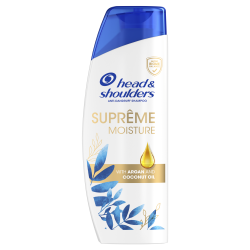Hair product build up and styling mistakes causing dandruff
In this article:
- Go to sectionCommon styling mistakes that can cause dandruff
- Go to sectionStyling your hair with a dry scalp
- Go to sectionCHECK YOUR PRODUCTS
- Go to sectionGET RID OF THE BUILD-UP
- Go to sectionGO “NAKED” EVERY NOW AND THEN
- Go to sectionHAIR STYLING PRODUCTS AND SENSITIVE SCALP
- Go to sectionWHAT INGREDIENTS?
- Go to sectionDRY SHAMPOO – NO SUBSTITUTE FOR PROPER SHAMPOO
- Go to sectionWASH YOUR HAIR REGULARLY
If you suffer from dry scalp or dandruff and want to know how to stop itchy scalp, the first thing you can do is make some subtle changes to your hair care routine. Here are some easy steps you can take for flake-free hair that turns heads for all the right reasons.
Common styling mistakes that can cause dandruff
Looking and feeling like your best self is important, but the reality is, dandruff can affect our confidence. So, what are some of the itchy scalp causes that lead to dandruff? Look no further than your morning or evening hair care routine – it might actually be making your itchy, flaky scalp worse.
If you’re a dandruff sufferer, pay special attention to these areas:
1. Cleansing
Did you know there’s a right and wrong way to wash your hair? That’s right! The cleansing step is where so many dandruff sufferers fall short – and we don’t only mean by choosing the wrong shampoo.
There are many small mistakes that can actually aggravate an existing dandruff problem, so if you’re wondering what causes dry scalp that can result in dandruff, consider this;
Water temperature. Keep temperatures moderate so you don’t aggravate the skin on your scalp. Dry scalp causes include water that’s too hot.
Quantity. Not using the right amount of shampoo can result in itchy or dry scalp. The amount you should use actually depends on how much hair you have (length and thickness), how oily/greasy your scalp is naturally, and how frequently you wash. If you notice greasy/oily/itchiness before your next wash, you may want to increase the amount of shampoo you use, and/or wash more frequently. Generally, though, about a tablespoon (about 15ml or a palm full) is right for getting rid of build-up and leaving your scalp in top condition.
Start at the roots. Always apply shampoo from root to tip (the same direction as the cuticle of hair) to avoid doing any damage. And don’t forget to give your scalp a gentle massage to make sure the active ingredients in your dandruff shampoo can work right at the source of your flakes.
2. Switching shampoo
Don’t switch shampoos stay protected against dandruff by using Head & Shoulders Men Ultra Deep Cleansing Shampoo. Switching between an anti-dandruff shampoo and ordinary shampoo can wash dandruff-preventing ingredients off your scalp, leaving you less protected.
3. Conditioning
Conditioners moisturize hair and keep it hydrated so it looks its best, but not all conditioners are created equal – especially if you have dandruff. Many non-dandruff conditioners actually wash away the active ingredient in anti-dandruff shampoo, making it less effective at getting rid of flakes making it one of the itchy scalp causes. Head & Shoulders shampoo and conditioners are designed to be used together, so you get the best combination of active ingredients for hair and scalp care, plus dandruff prevention.
4. Heat - easy on the heat styling
Want to know what causes dry scalp? Excessive heat. Make sure you use a medium heat when blow drying and keep the nozzle at least 8 inches (20 cm) away from your head. Keep it moving to avoid too much heat in one spot, ideally blowing around your head from root to tip. Try to leave your hair to dry naturally. Heat from your hair dryer, curlers or straighteners can be very intense, and if you’re not careful, you could damage your scalp.
5. Product build-up
One of the lesser known itchy scalp causes is product build-up on the hair and scalp. Leaving a little product in every now and then won’t hurt, but without regular washing, product can build up leaving behind by-products that cause discomfort and flakes. So, even if you’re not sensitive to the styling product itself, between washes it could begin causing redness and itching.
That’s where Head & Shoulders Men Ultra Deep Cleansing Shampoo comes in.
If you’re a user of wax, clay, gel or hair spray especially you need to be sure you’re getting a good, deep clean in with every wash. This boosted formula contains charcoal extract for a deep cleanse, but has a gentle, pH-balanced formula that makes it suitable for everyday use. Apply the shampoo directly to the scalp instead of just the hair, and lather well for about 30 seconds. You can also use a deep cleaning shampoo or clarifying shampoo once a week to give it a really good clean and make sure to get rid of as much product as possible.
Styling your hair with a dry scalp
If you’ve got a dry scalp, styling your hair the wrong way can make it worse. We’re talking everything from brushing to blow-drying.
CHECK YOUR PRODUCTS
Some styling products could agitate a dry scalp – it all depends on what ingredients you’re sensitive to. You can’t always know for sure how a certain product is going to affect your scalp, so you may need to try a few different things to work out what’s best for you.
GET RID OF THE BUILD-UP
Build-up can trap potentially bothersome substances on the scalp. Over time, it might even break down into substances that can damage the scalp.
As the scalp’s outer layer becomes damaged, it further weakens the skin’s natural defences, causing you to lose more essential moisture and further drying out the scalp.
So, stop build-up from happening and use a deep cleaning shampoo at least once a week.
Follow with a conditioner to keep hair soft and hydrated.
GO “NAKED” EVERY NOW AND THEN
Let your hair go naked at least one day a week, more if possible. So that means no styling products at all – it will give your hair and scalp a rest from any stress from styling products.
HAIR STYLING PRODUCTS AND SENSITIVE SCALP
If you don’t get rid of excess styling products in your hair, it can break down and cause discomfort on your scalp.
Just about any styling product can trigger discomfort on a sensitive scalp – it all depends on what ingredients you’re sensitive to.
It’s often a case of trial and error. You can’t always know for sure how a certain product is going to affect your scalp, so you may need to try a few different things to work out what’s best for you.
WHAT INGREDIENTS?
There are a wide variety of ingredients out there – “hold” polymers, conditioning agents, oils, fragrances, preservatives…too many compounds to name.
No two products are alike, either. You might find that some products cause scalp sensitivity as your skin reacts to certain ingredients.
Unfortunately, everyone’s skin is different, and while one person might be sensitive to an ingredient, the next person may be fine with it. So, it’s a case of trial and error to rule out the products your scalp doesn’t like.
DRY SHAMPOO – NO SUBSTITUTE FOR PROPER SHAMPOO
One popular styling product is dry shampoo. Often seen as a quick fix for when you can’t wash your hair, it’s designed to reduce the greasy, oily look of unwashed hair.
But it’s no substitute for washing your hair. When you use shampoo, you’re getting rid of dirt, dust and particles on the scalp to really clean the hair and scalp and prevent them from breaking down into potentially harmful substances.
Dry shampoo doesn’t do that – instead, it absorbs the oils on the hair and scalp so it doesn’t look dirty but really, the dirt and dust is still there, slowly breaking down.
WASH YOUR HAIR REGULARLY
To tackle product build-up and to make sure you keep your hair healthy, try to wash your hair at least 3 times a week and use a deep cleaning shampoo at least once a week.
This will help to get rid of any product build-up on the scalp and keep it clean – so whatever style you go for, your hair and scalp will be in great condition.

